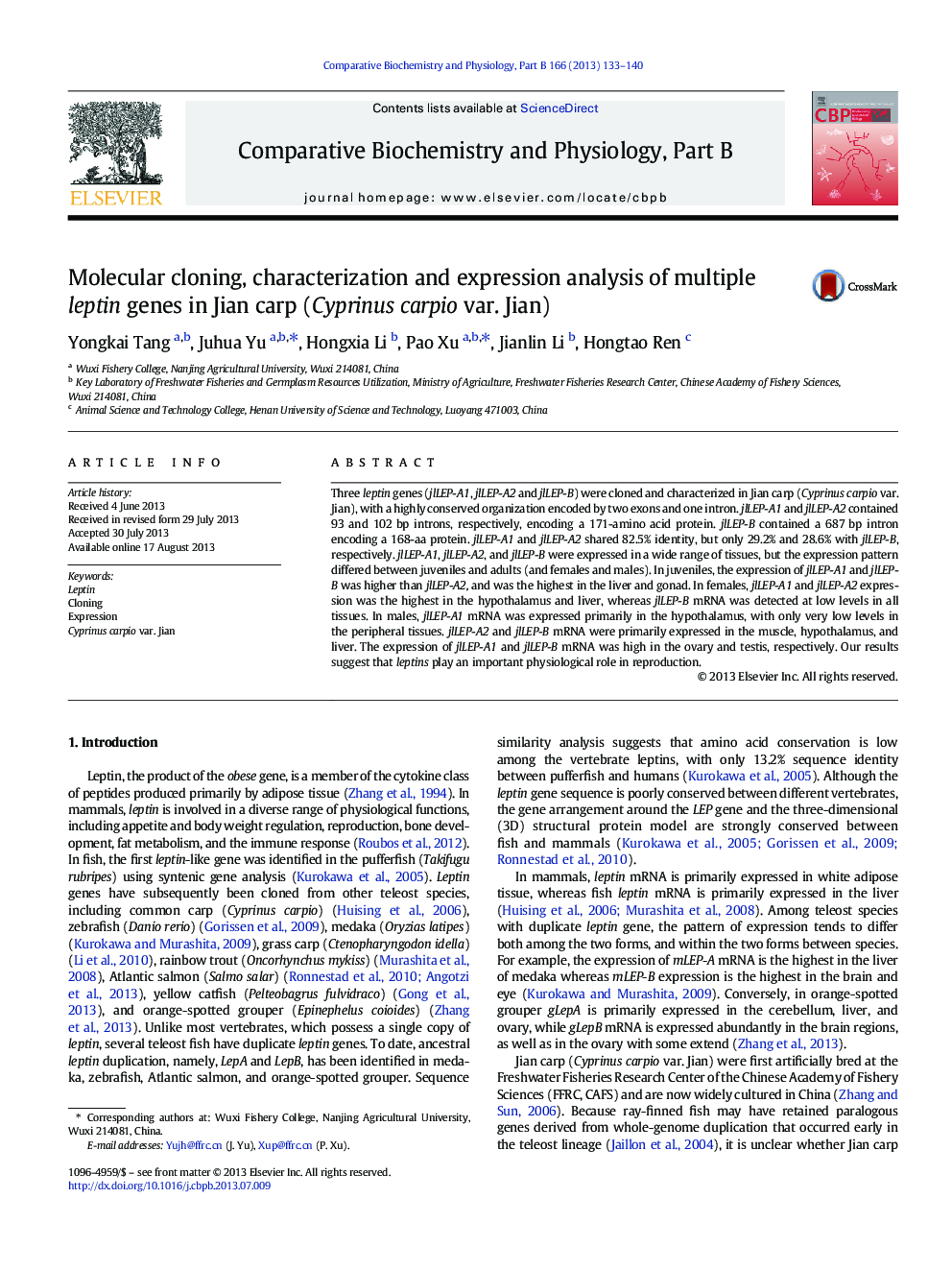| Article ID | Journal | Published Year | Pages | File Type |
|---|---|---|---|---|
| 1975300 | Comparative Biochemistry and Physiology Part B: Biochemistry and Molecular Biology | 2013 | 8 Pages |
Abstract
Three leptin genes (jlLEP-A1, jlLEP-A2 and jlLEP-B) were cloned and characterized in Jian carp (Cyprinus carpio var. Jian), with a highly conserved organization encoded by two exons and one intron. jlLEP-A1 and jlLEP-A2 contained 93 and 102Â bp introns, respectively, encoding a 171-amino acid protein. jlLEP-B contained a 687Â bp intron encoding a 168-aa protein. jlLEP-A1 and jlLEP-A2 shared 82.5% identity, but only 29.2% and 28.6% with jlLEP-B, respectively. jlLEP-A1, jlLEP-A2, and jlLEP-B were expressed in a wide range of tissues, but the expression pattern differed between juveniles and adults (and females and males). In juveniles, the expression of jlLEP-A1 and jlLEP-B was higher than jlLEP-A2, and was the highest in the liver and gonad. In females, jlLEP-A1 and jlLEP-A2 expression was the highest in the hypothalamus and liver, whereas jlLEP-B mRNA was detected at low levels in all tissues. In males, jlLEP-A1 mRNA was expressed primarily in the hypothalamus, with only very low levels in the peripheral tissues. jlLEP-A2 and jlLEP-B mRNA were primarily expressed in the muscle, hypothalamus, and liver. The expression of jlLEP-A1 and jlLEP-B mRNA was high in the ovary and testis, respectively. Our results suggest that leptins play an important physiological role in reproduction.
Related Topics
Life Sciences
Biochemistry, Genetics and Molecular Biology
Biochemistry
Authors
Yongkai Tang, Juhua Yu, Hongxia Li, Pao Xu, Jianlin Li, Hongtao Ren,
